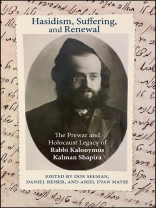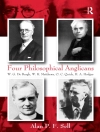Reconsiders the legacy of an important Hasidic mystic, leader, and educator who confronted the dilemmas of modernity after World War I and whose writing constitutes a unique testimony to religious experience and its rupture in the Warsaw Ghetto.
Kalonymus Kalman Shapira (1889–1943) was a remarkable Hasidic mystic, leader, and educator. He confronted the secularization and dislocation of Polish Jews after World War I, the failure of the traditional educational system, and the devastation of the Holocaust, in which he lost all his close family and eventually his own life. Thanks to a new critical edition of his Warsaw Ghetto sermons, scholars have begun to reassess the relationship between Shapira’s literary and educational attainments, his prewar mysticism, and his Holocaust experience, and to reexamine the question of faith-or its collapse-in the Warsaw Ghetto. This interdisciplinary volume, the first such work devoted to a twentieth-century Hasidic leader, integrates social and intellectual history along with theological, literary, and anthropological analyses of Shapira’s legacy. It raises theoretical and methodological questions related to the study of Jewish thought and mysticism, but also contributes to contemporary conversations about topics such as spiritual renewal and radical religious experience, the literature of suffering, and perhaps most pressingly, the question of faith and meaning-or their rupture-in the wake of genocide.
Cuprins
Acknowledgments
Introduction
Part I: Hasidism and Renewal
1. The Place of Piety: Piaseczno in the Landscape of Polish Hasidism
Marcin Wodziński
2. The Rebbe of Piaseczno: Between Two Trends in Hasidism
Moshe Idel
3. The Devotional Talmud: Study as a Sacred Quest
Ariel Evan Mayse
4. Mystical Fraternities: Jerusalem, Tiberius, and Warsaw: A Comparative Study of Goals, Structures, and Methods
Zvi Leshem
5. Self-Creation through Texts: Kalonymus Kalman Shapira’s Incarnational Theology
David Maayan
6. Hasidism in Dialogue with Modernity: Rabbi Kalonymus Shapira’s Derekh ha-Melekh
Ora Wiskind
Part II: Text, Theodicy, and Suffering
7. A New Reading of the Rebbe of Piaseczno’s Holocaust-Era Sermons: A Review of Daniel Reiser’s Critical Edition
Moria Herman
8. Creative Writing in the Shadow of Death: Psychological and Phenomenological Aspects of Rabbi Shapira’s Manuscript ‘Sermons from the Years of Rage’
Daniel Reiser
9. Miriam, Moses, and the Divinity of Children: Human Individuation at the Cusp of Persistence and Perishability
Nehemia Polen
10. Raging against Reason: Overcoming Sekhel in R. Shapira’s Thought
James A. Diamond
11. At the Edge of Explanation: Rethinking ‘Afflictions of Love’ in Sermons from the Years of Rage
Erin Leib Smokler
12. ‘Living with the Times’: Historical Context in the Wartime Writings of Rabbi Kalonymus Kalman Shapira
Henry Abramson
13. Covenantal Rupture and Broken Faith in Esh Kodesh
Shaul Magid
14. Pain and Words: On Suffering, Hasidic Modernism, and the Phenomenological Turn
Don Seeman
Contributors
Index
Despre autor
Don Seeman is Associate Professor in the Department of Religion and the Tam Institute for Jewish Studies at Emory University. He is the author of One People, One Blood: Ethiopian-Israelis and the Return to Judaism. Daniel Reiser is Chair of the Department of Jewish Thought at Herzog College, Israel. His books include Imagery Techniques in Modern Jewish Mysticism. Ariel Evan Mayse is Assistant Professor of Religious Studies at Stanford University. He is the author of Speaking Infinities: God and Language in the Teachings of Rabbi Dov Ber of Mezritsh.












